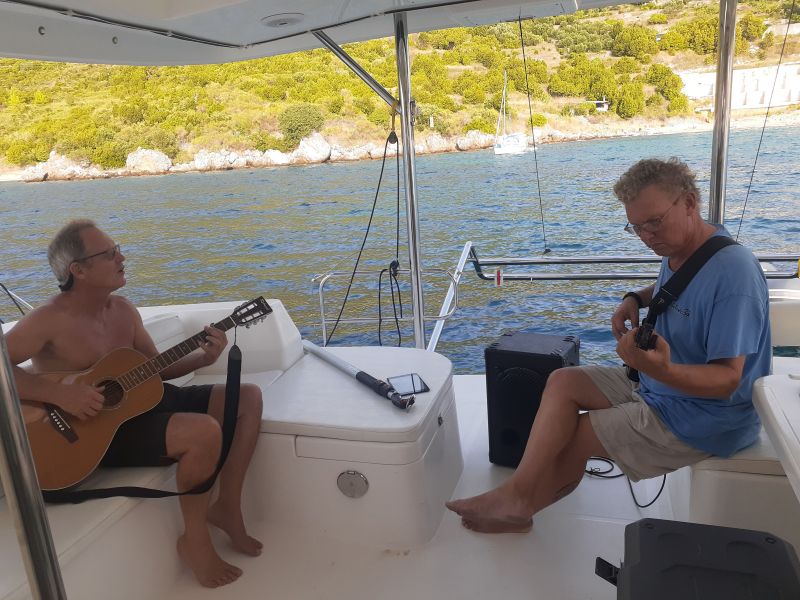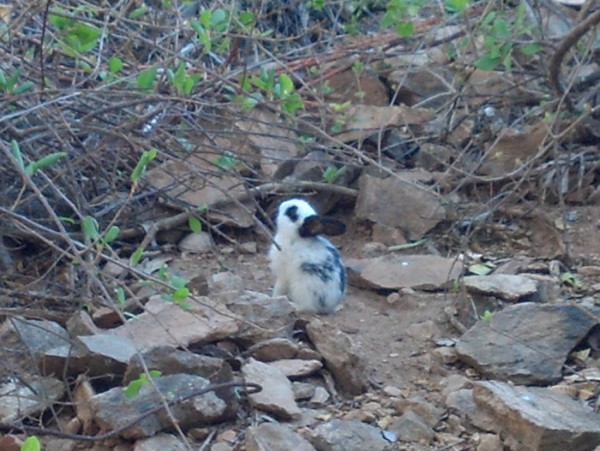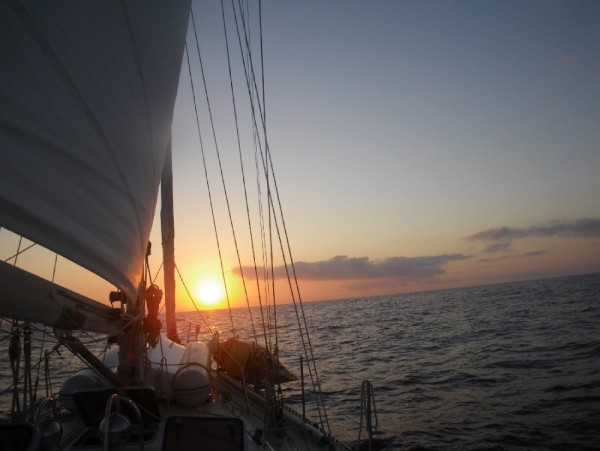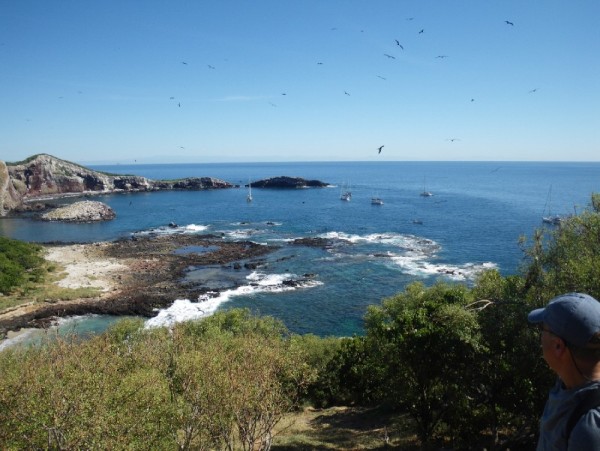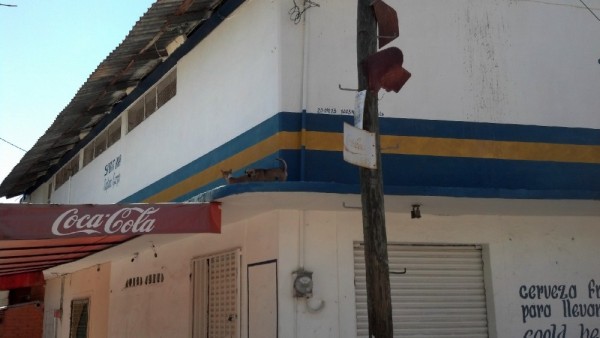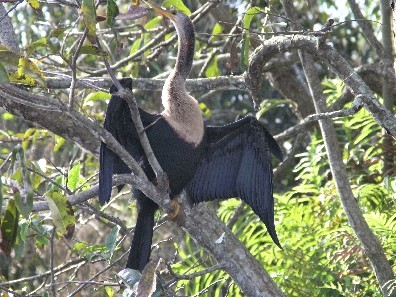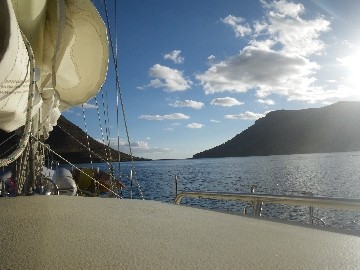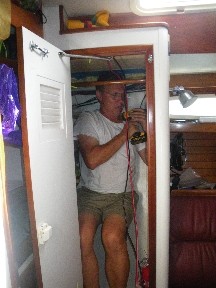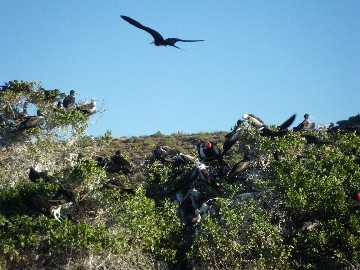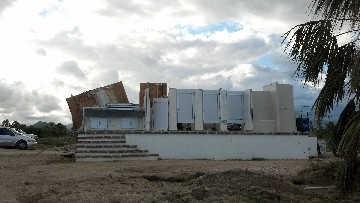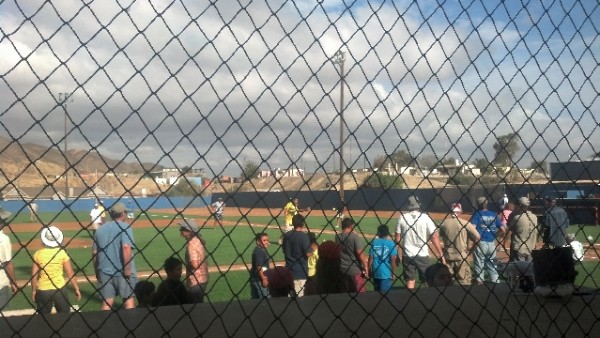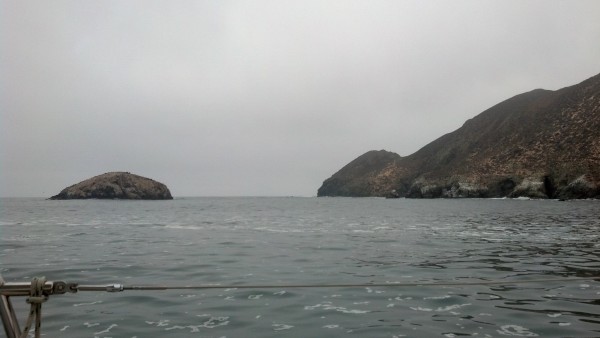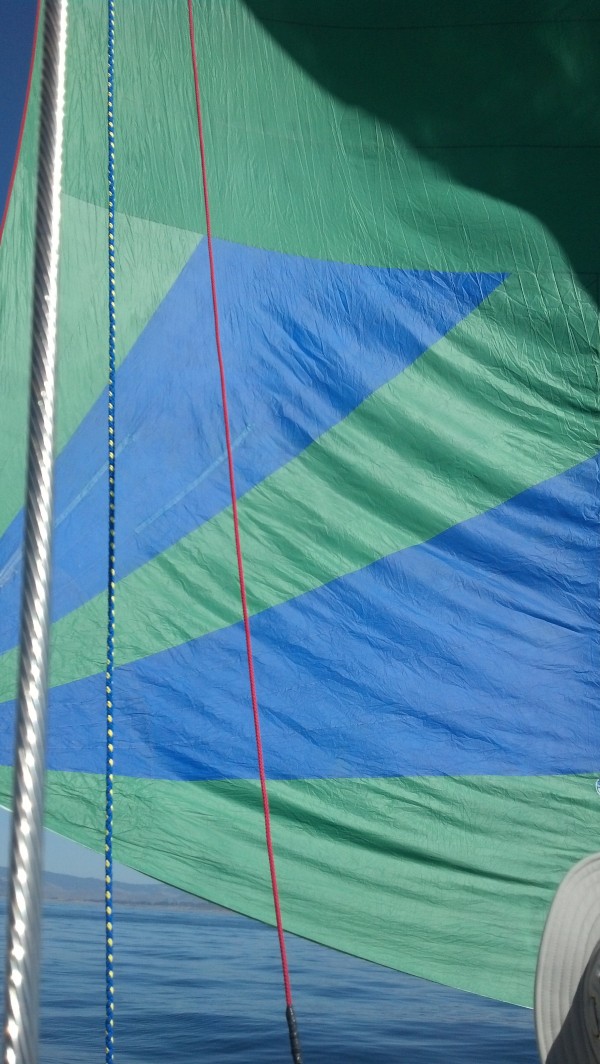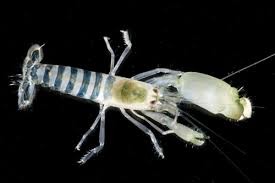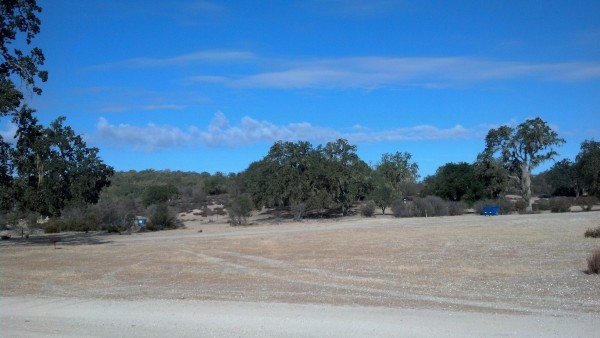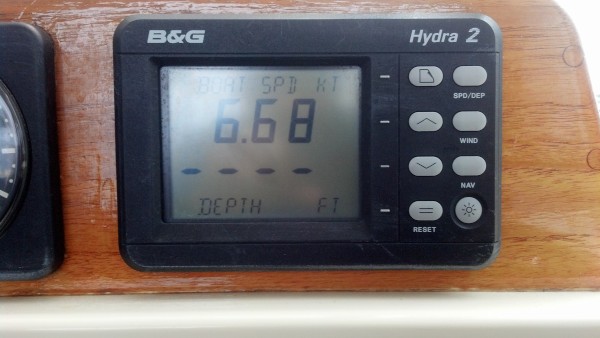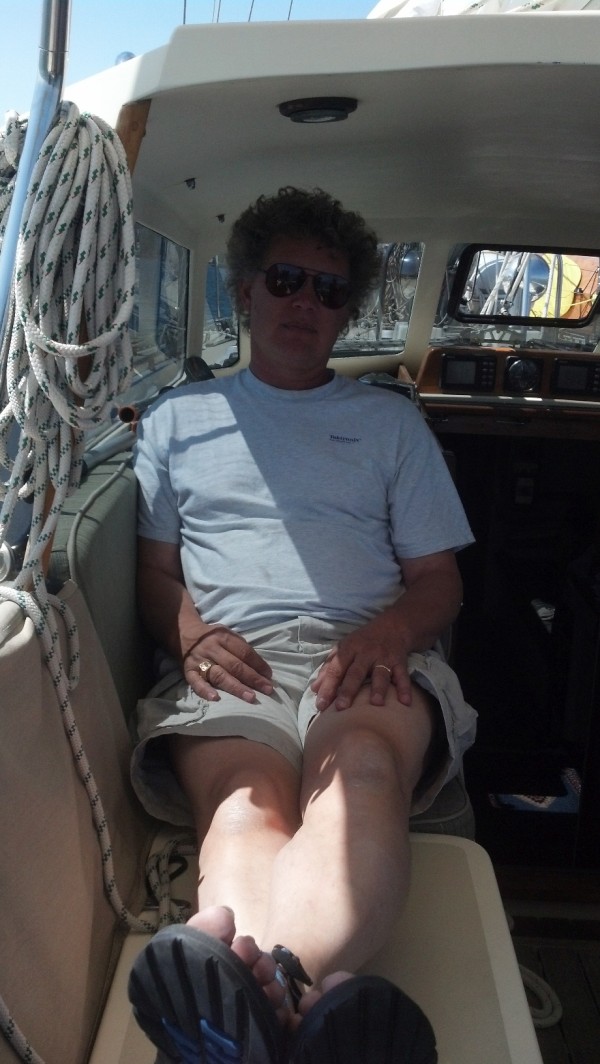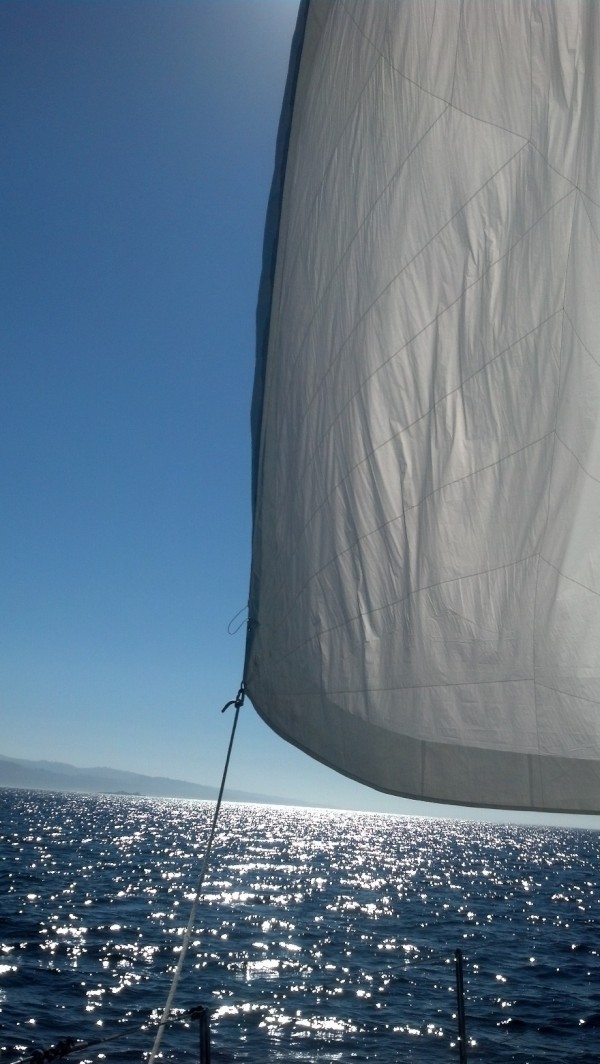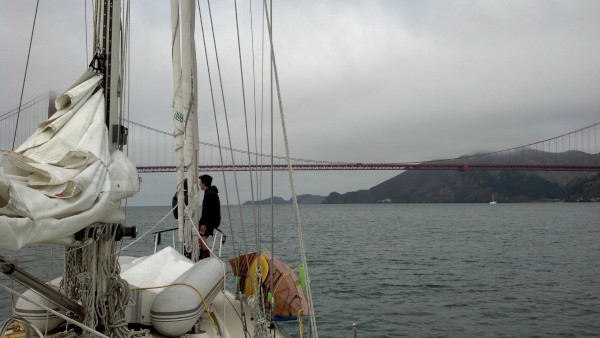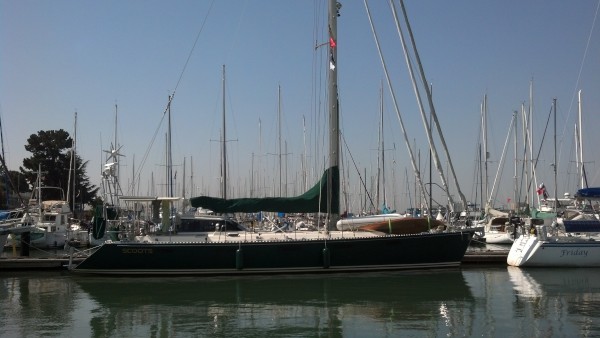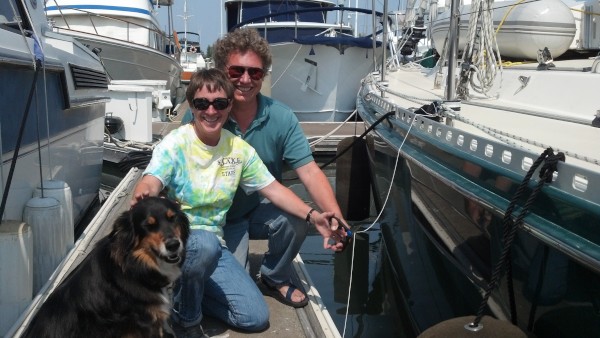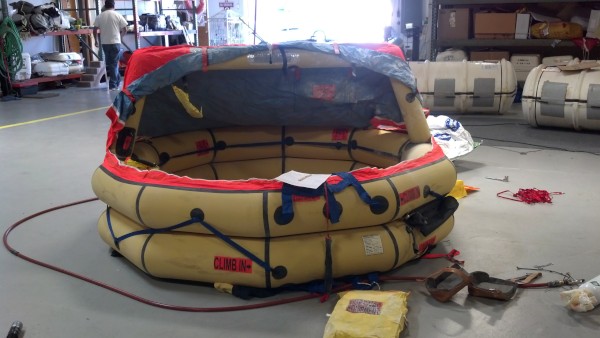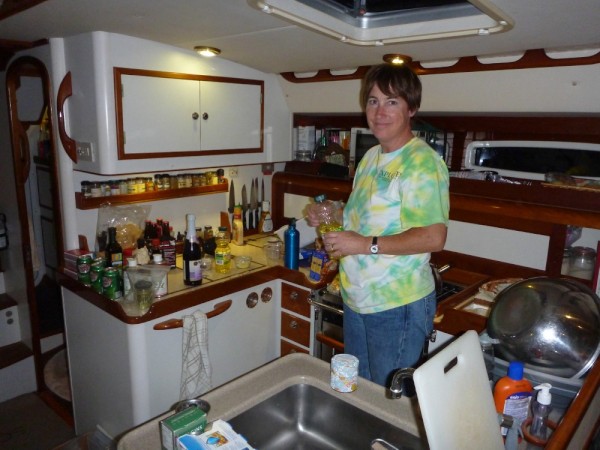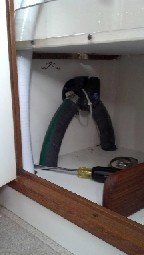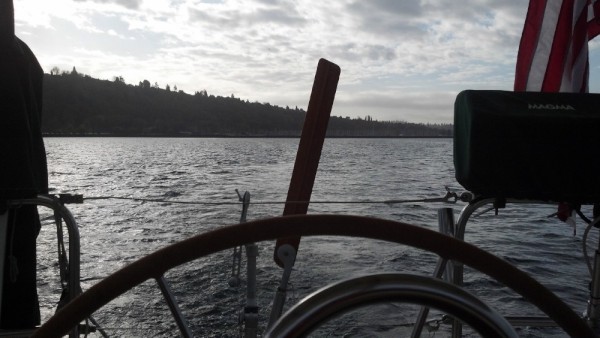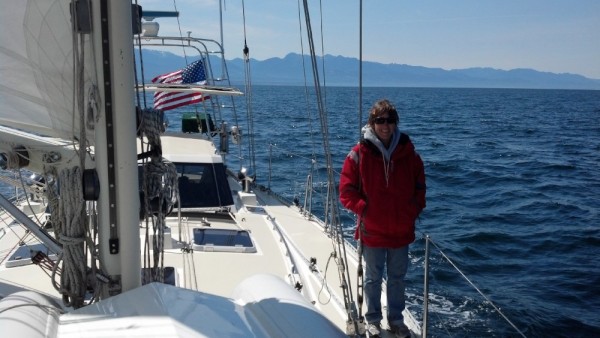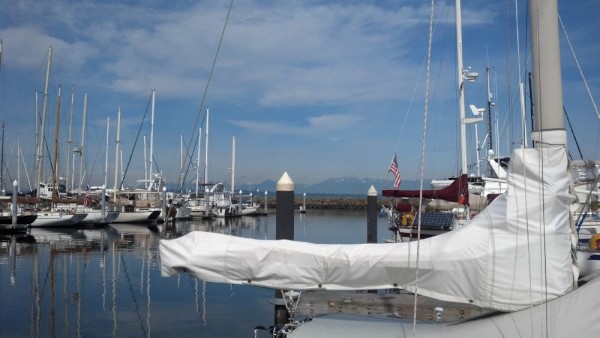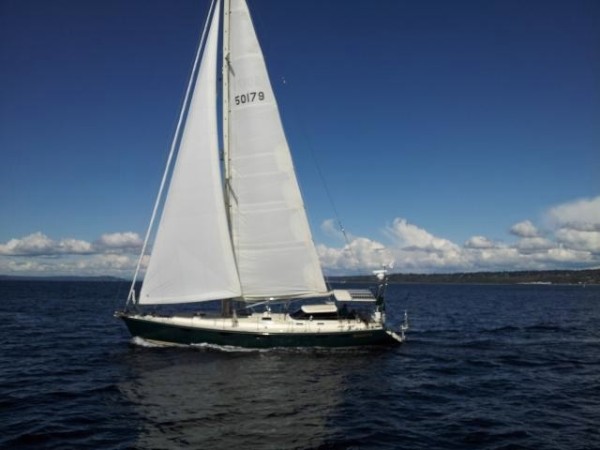
Our Ever-Changing Backyard
14 April 2024 | Zakinthos to Sounion, Greece
27 January 2024 | Preveza to Zakinthos Island, Greece
15 December 2023 | Sarandë, Albania to Preveza, Greece
27 November 2023 | Himarë, Albania
13 November 2023 | Orikum, Albania
30 October 2023 | Durrës, Albania
29 October 2023 | Porto Montenegro to Athens, Greece
22 August 2023 | Montenegro
21 August 2023 | Montenegro
08 August 2023 | Montenegro
02 August 2023
27 July 2023 | Montenegro
04 May 2023
18 April 2023 | Monopoli, Italy - Zadar, Croatia
09 April 2023 | Korčula, Croatia
01 April 2023 | Otok Badija, near Korcula, Croatia
15 March 2023 | Mljet National Park, Croatia
11 December 2022 | Uvala Przina, Pelješac Peninsula, Croatia
20 November 2022 | Uvala Podškolj, Croatia
05 November 2022 | Lopud, Croatia
Uvala Podškolj - A hidden gem, with a fabulous restaurant, too
20 November 2022 | Uvala Podškolj, Croatia
Vandy Shrader
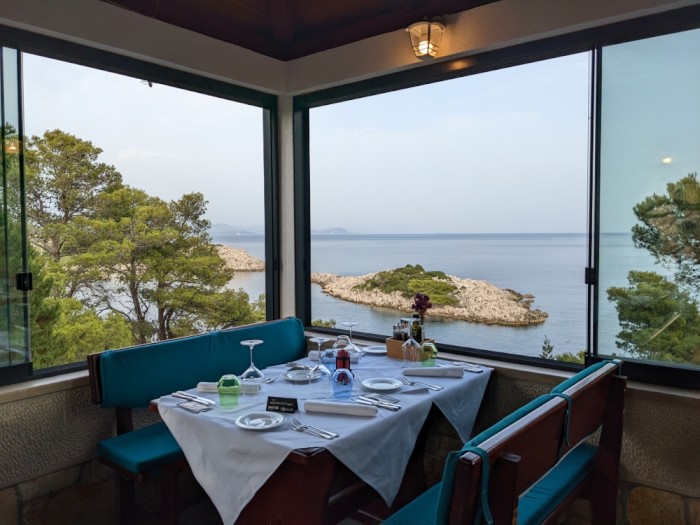
June 23-24
Uvala Podškolj 42°42.314'N/17°44.673'E

When we pulled up our anchor at Lopud, we headed toward Otok Mljet, the 23-mile-long island whose southern tip lay about 9 miles to the west of Lopud. We knew that we wanted to eventually visit Mljet National Park at the northern end of the island, but today we left our options open as to where we'd stop along its coast. The day was sunny and nearly calm, with a few knots of wind coming from the customary direction of "right in front of us." So it was another day for Thing 1 and Thing 2 to provide our propulsion.
As we motored along, enjoying the scenery - blue water, white rocks, green pines - I checked Navily for nearby anchorages. One of the anchorages on the southern end of the island looked interesting and had good reviews on Navily. It also had a weedy bottom, which meant that anchoring would be suboptimal to difficult, but it sported several restaurant moorings to tie up to as an alternative. We decided to check it out.
Rounding the end of a tiny islet, we motored through the narrow, shallow passage to discover a stunning hidden gem of a place. The Uvala Podškolj anchorage was tucked into a narrow slot between the rocky coastline and a long, low, rocky island (Veliki Školj) that was currently being used as a rookery by hundreds of yellow-legged gulls. Eight large mooring buoys bobbed in the water, seven of them available. We chose one and tied Awildian up to it.

What a cool spot! Clouds of gulls circled over the little island and paddled near its shore, fragrant Aleppo pine trees stood on the mainland shore; Awildian floated on clear water through which we could see bright green blades of sea grass waving in the current, with fish swimming among them.
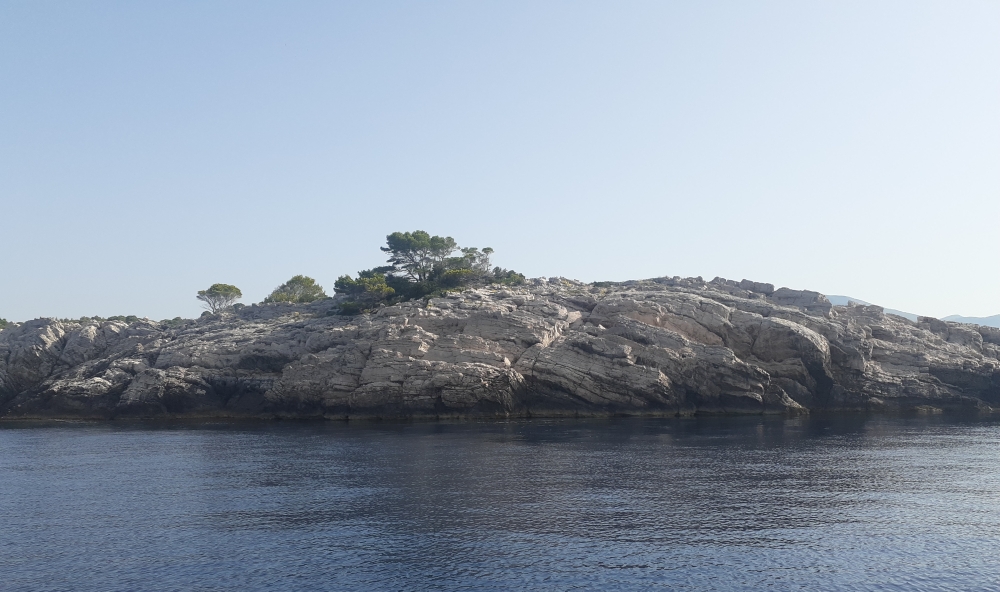
The gulls' island
We called Konoba Stermasi ("konoba" means tavern), to let them know that we'd taken one of their moorings. Adrian (pronounced "Ah-dree-ahn") answered and we had a nice chat; he told me that he was the owner of the family-run restaurant, and asked if we preferred to have lunch or dinner. We opted for dinner. So there we were, all settled in by 11 am.
We enjoyed the rest of the day. I spent hours watching the gulls - all ages were present, from fluffy, mottled gray babies, to squawking, full-grown adults - and scanning the pine trees for other birds.
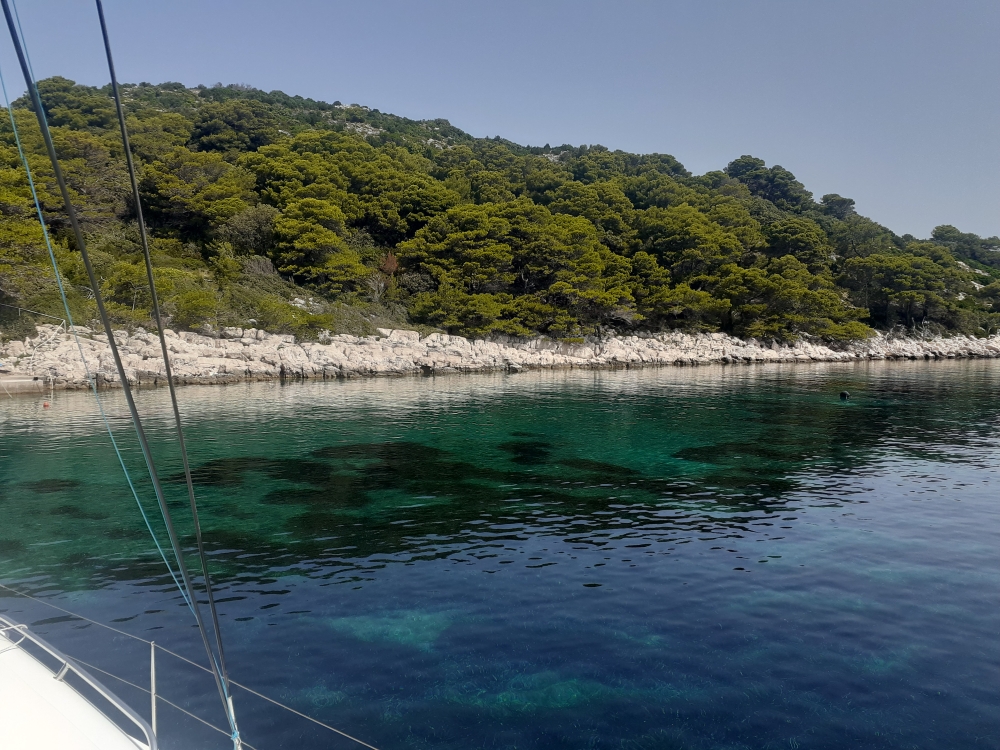
The piney shore
I did some writing. Eric played bass and spent some time getting a Raspberry Pi working with our navigation data. We both peeked at the underwater world through Awildian's "fish TVs" (glass escape hatches, one in each hull).
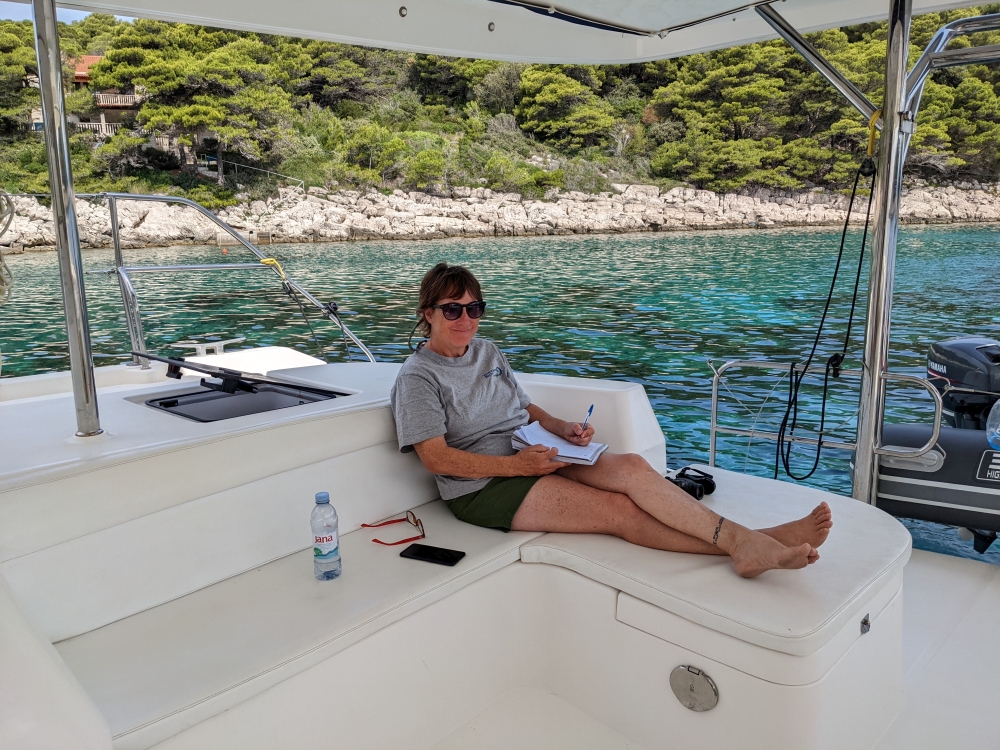
We took our dinghy to shore at 6:30, and tied to the little concrete dock. From there, we walked up the hill along a winding, pine-shaded road, to Konoba Stermasi, which perched at the top, overlooking the inlet.

Adrian met us at the door and welcomed us in. As he led us to our table, we walked past a room adjacent to the kitchen that was full of big, burly men who were eating dinner at a long table. It looked like Adrian provided dinner for the fishermen and others who supplied the restaurant with its raw materials. We thought that was pretty cool.
Adrian and his family all participated in the running of the restaurant. Adrian told us that his mother made the gnocchi (she was also serving), and his wife made some of the other pastas. His daughter was pouring water and clearing plates. He probably had some other kin in the kitchen. It was truly a family affair, and well done at that.
It was at Konoba Stermasi that we were introduced to what became our favorite variety of Croatian red wine: Dingač (that's pronounced "din-gach"). Dingač is produced from plavac mali grapes, which are native to the Dalmatian coast of Croatia. In taste it approximates a zinfandel. Prompting Eric to call it "the zins of our fathers," a bad pun alluding to my Croatian heritage.
Adrian came by with the requisite silver platter of seafood offerings - freshly caught red scorpionfish, sea bass, sea bream, monkfish, and some woozy lobsters. I opted for a sea bream (they grill the fish whole here), and Eric chose a local wild boar dish that included Grandma's gnocchi. Even though this was a small, family-run restaurant, everything was done with panache: from the artistic presentations, to the creative menu items, to Adrian's in-depth and interesting descriptions of the wine and the food ingredients, to the classy way Adrian's young daughter, white tea towel over her forearm, poured the water.
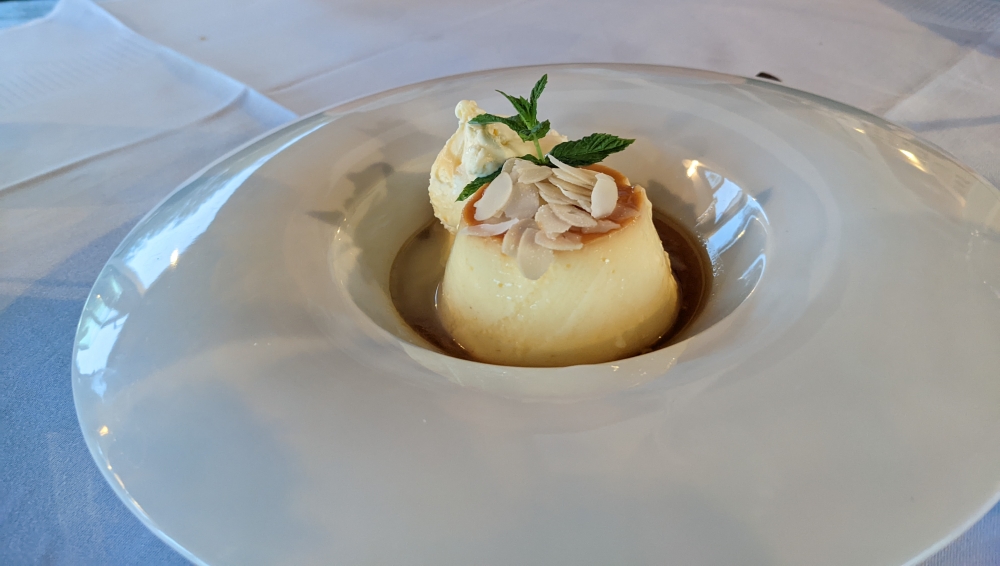
A pretty dessert
As the evening went on, more people came into the restaurant, from several different countries, most of them from boats on moorings. The lively conversation floating in the air was flavored by many different languages. Adrian and his family - who'd spoken to us in flawless English - slipped smoothly from Croatian to English to French to Italian to German as they spoke with different people. We were impressed.
After dinner, our server offered us a selection of home-made after-dinner drinks, on the house. One was "strong," she told us, "like grappa." The other was "sweet, made with blueberries." We opted for one of each. I liked the sweet one much better. Though the grappa might make a good substitute, should we run out of fuel for our dinghy motor.
The next morning at first light (around 5 am), the gulls started their day, with lots of raucous conversation. We got up a little while later, and tuned in to the Mediterranean Cruisers' HF radio Net (the MedNet) at 8 am. Eric checked in and chatted with the net controller, a British bloke named Alan on a boat named Ticketeeboo (yes that's how he spells it), who was somewhere in Greece. We heard from one other boat, who was also somewhere in Greece, but that was it. We'd been expecting a much larger crowd of cruisers on the MedNet, since there are so many people on boats here, but for the whole summer, it was the same three or four participants every day. We were a bit disappointed.
When we were in the Pacific, we'd been active participants - and were even net controllers - on several HF radio nets there: the Puddle Jump Net when we'd crossed from Mexico to Nuku Hiva, the Polynesian Magellan Net (PolyMagNet) for the ride across the rest of the South Pacific, and the South Pacific Cruisers' Net (SoPacNet) into which it morphed later on. The nets created a huge community of cruisers, spread across oceans, sharing advice, suggestions, and knowledge about all kinds of things; reporting current weather conditions; and in one case even providing the location of the single roving Customs boat in a certain island nation, so you could know if you had a chance of being boarded. We enjoyed being connected with other cruisers who were nearby or hundreds - sometimes thousands - of miles away. It was nice to hear another voice when we were out on the blue, seemingly alone, and reassuring to know that if we needed something or got into trouble, there was a network of cruisers out there who were listening. I can't tell you how many times we "met" people on the radio nets, before meeting them in person. When we did meet them, we felt like we already knew them, and it was fun to see whether they looked they way we'd imagined them!
Which is why we were disappointed that there were so few cruisers on the MedNet. It could've been a really great source of information and community for us, especially as we're new to the area. At first we thought the lack of participation was specific to the MedNet, but we've since heard from our friend Andy, who is the net controller for the SoPacNet, that the number of participants in that net has also dwindled in recent years, from a few dozen to a handful. Many cruisers, it seems, are choosing to use sat phones rather than HF radios to communicate now. To each his own, but we feel they're missing out on all that HF radio nets have to offer.
Though we were in a lovely spot, we were on a restaurant mooring, which meant that we'd either have to leave today or eat dinner out again. Since we didn't really want to have dinner out again right away, we consulted Navily for places to go. First we looked at going north along the coast of Mljet. As most of these anchorages had moorings or restaurant quays, and we wanted to anchor, we kept looking. Next we checked for anchorages across the Mljetski Kanal, on the Pelješac Peninsula, which runs roughly parallel to Mljet. At the southern end of the peninsula was an anchorage in a little "fishhook" cove, which Navily called "Przina." Navily users commented that it was "quiet" and "uncrowded"; some of our friends who'd anchored there had remarked that there was "nothing there." All of this sounded really good to Eric and me, so we untied Awildian from the mooring and waved goodbye to the gulls as we rounded their island.
Uvala Podškolj 42°42.314'N/17°44.673'E

When we pulled up our anchor at Lopud, we headed toward Otok Mljet, the 23-mile-long island whose southern tip lay about 9 miles to the west of Lopud. We knew that we wanted to eventually visit Mljet National Park at the northern end of the island, but today we left our options open as to where we'd stop along its coast. The day was sunny and nearly calm, with a few knots of wind coming from the customary direction of "right in front of us." So it was another day for Thing 1 and Thing 2 to provide our propulsion.
As we motored along, enjoying the scenery - blue water, white rocks, green pines - I checked Navily for nearby anchorages. One of the anchorages on the southern end of the island looked interesting and had good reviews on Navily. It also had a weedy bottom, which meant that anchoring would be suboptimal to difficult, but it sported several restaurant moorings to tie up to as an alternative. We decided to check it out.
Rounding the end of a tiny islet, we motored through the narrow, shallow passage to discover a stunning hidden gem of a place. The Uvala Podškolj anchorage was tucked into a narrow slot between the rocky coastline and a long, low, rocky island (Veliki Školj) that was currently being used as a rookery by hundreds of yellow-legged gulls. Eight large mooring buoys bobbed in the water, seven of them available. We chose one and tied Awildian up to it.

What a cool spot! Clouds of gulls circled over the little island and paddled near its shore, fragrant Aleppo pine trees stood on the mainland shore; Awildian floated on clear water through which we could see bright green blades of sea grass waving in the current, with fish swimming among them.

The gulls' island
We called Konoba Stermasi ("konoba" means tavern), to let them know that we'd taken one of their moorings. Adrian (pronounced "Ah-dree-ahn") answered and we had a nice chat; he told me that he was the owner of the family-run restaurant, and asked if we preferred to have lunch or dinner. We opted for dinner. So there we were, all settled in by 11 am.
We enjoyed the rest of the day. I spent hours watching the gulls - all ages were present, from fluffy, mottled gray babies, to squawking, full-grown adults - and scanning the pine trees for other birds.

The piney shore
I did some writing. Eric played bass and spent some time getting a Raspberry Pi working with our navigation data. We both peeked at the underwater world through Awildian's "fish TVs" (glass escape hatches, one in each hull).

We took our dinghy to shore at 6:30, and tied to the little concrete dock. From there, we walked up the hill along a winding, pine-shaded road, to Konoba Stermasi, which perched at the top, overlooking the inlet.

Adrian met us at the door and welcomed us in. As he led us to our table, we walked past a room adjacent to the kitchen that was full of big, burly men who were eating dinner at a long table. It looked like Adrian provided dinner for the fishermen and others who supplied the restaurant with its raw materials. We thought that was pretty cool.
Adrian and his family all participated in the running of the restaurant. Adrian told us that his mother made the gnocchi (she was also serving), and his wife made some of the other pastas. His daughter was pouring water and clearing plates. He probably had some other kin in the kitchen. It was truly a family affair, and well done at that.
It was at Konoba Stermasi that we were introduced to what became our favorite variety of Croatian red wine: Dingač (that's pronounced "din-gach"). Dingač is produced from plavac mali grapes, which are native to the Dalmatian coast of Croatia. In taste it approximates a zinfandel. Prompting Eric to call it "the zins of our fathers," a bad pun alluding to my Croatian heritage.
Adrian came by with the requisite silver platter of seafood offerings - freshly caught red scorpionfish, sea bass, sea bream, monkfish, and some woozy lobsters. I opted for a sea bream (they grill the fish whole here), and Eric chose a local wild boar dish that included Grandma's gnocchi. Even though this was a small, family-run restaurant, everything was done with panache: from the artistic presentations, to the creative menu items, to Adrian's in-depth and interesting descriptions of the wine and the food ingredients, to the classy way Adrian's young daughter, white tea towel over her forearm, poured the water.

A pretty dessert
As the evening went on, more people came into the restaurant, from several different countries, most of them from boats on moorings. The lively conversation floating in the air was flavored by many different languages. Adrian and his family - who'd spoken to us in flawless English - slipped smoothly from Croatian to English to French to Italian to German as they spoke with different people. We were impressed.
After dinner, our server offered us a selection of home-made after-dinner drinks, on the house. One was "strong," she told us, "like grappa." The other was "sweet, made with blueberries." We opted for one of each. I liked the sweet one much better. Though the grappa might make a good substitute, should we run out of fuel for our dinghy motor.
The next morning at first light (around 5 am), the gulls started their day, with lots of raucous conversation. We got up a little while later, and tuned in to the Mediterranean Cruisers' HF radio Net (the MedNet) at 8 am. Eric checked in and chatted with the net controller, a British bloke named Alan on a boat named Ticketeeboo (yes that's how he spells it), who was somewhere in Greece. We heard from one other boat, who was also somewhere in Greece, but that was it. We'd been expecting a much larger crowd of cruisers on the MedNet, since there are so many people on boats here, but for the whole summer, it was the same three or four participants every day. We were a bit disappointed.
When we were in the Pacific, we'd been active participants - and were even net controllers - on several HF radio nets there: the Puddle Jump Net when we'd crossed from Mexico to Nuku Hiva, the Polynesian Magellan Net (PolyMagNet) for the ride across the rest of the South Pacific, and the South Pacific Cruisers' Net (SoPacNet) into which it morphed later on. The nets created a huge community of cruisers, spread across oceans, sharing advice, suggestions, and knowledge about all kinds of things; reporting current weather conditions; and in one case even providing the location of the single roving Customs boat in a certain island nation, so you could know if you had a chance of being boarded. We enjoyed being connected with other cruisers who were nearby or hundreds - sometimes thousands - of miles away. It was nice to hear another voice when we were out on the blue, seemingly alone, and reassuring to know that if we needed something or got into trouble, there was a network of cruisers out there who were listening. I can't tell you how many times we "met" people on the radio nets, before meeting them in person. When we did meet them, we felt like we already knew them, and it was fun to see whether they looked they way we'd imagined them!
Which is why we were disappointed that there were so few cruisers on the MedNet. It could've been a really great source of information and community for us, especially as we're new to the area. At first we thought the lack of participation was specific to the MedNet, but we've since heard from our friend Andy, who is the net controller for the SoPacNet, that the number of participants in that net has also dwindled in recent years, from a few dozen to a handful. Many cruisers, it seems, are choosing to use sat phones rather than HF radios to communicate now. To each his own, but we feel they're missing out on all that HF radio nets have to offer.
Though we were in a lovely spot, we were on a restaurant mooring, which meant that we'd either have to leave today or eat dinner out again. Since we didn't really want to have dinner out again right away, we consulted Navily for places to go. First we looked at going north along the coast of Mljet. As most of these anchorages had moorings or restaurant quays, and we wanted to anchor, we kept looking. Next we checked for anchorages across the Mljetski Kanal, on the Pelješac Peninsula, which runs roughly parallel to Mljet. At the southern end of the peninsula was an anchorage in a little "fishhook" cove, which Navily called "Przina." Navily users commented that it was "quiet" and "uncrowded"; some of our friends who'd anchored there had remarked that there was "nothing there." All of this sounded really good to Eric and me, so we untied Awildian from the mooring and waved goodbye to the gulls as we rounded their island.
Comments
| Vessel Name: | Awildian, previously SCOOTS (2012-2021) |
| Vessel Make/Model: | Leopard 48 |
| Hailing Port: | San Francisco, CA |
| Crew: | Eric and Vandy Shrader |
| About: | We've been living aboard full time since September 2014. We sailed our Able Apogee 50, SCOOTS, from 2012-2021, and are now aboard our Leopard 48, Awildian, since March 2022. |
| Social: |
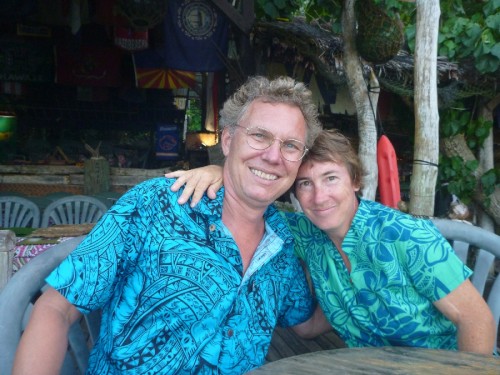
Who: Eric and Vandy Shrader
Port: San Francisco, CA


